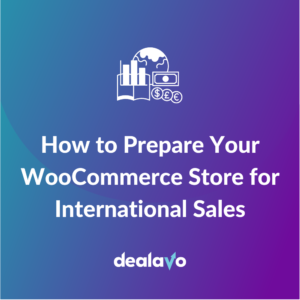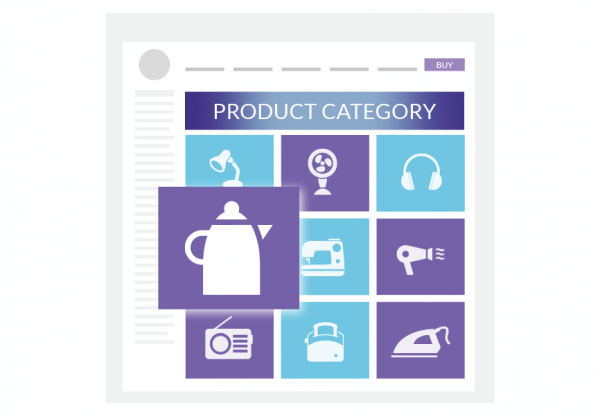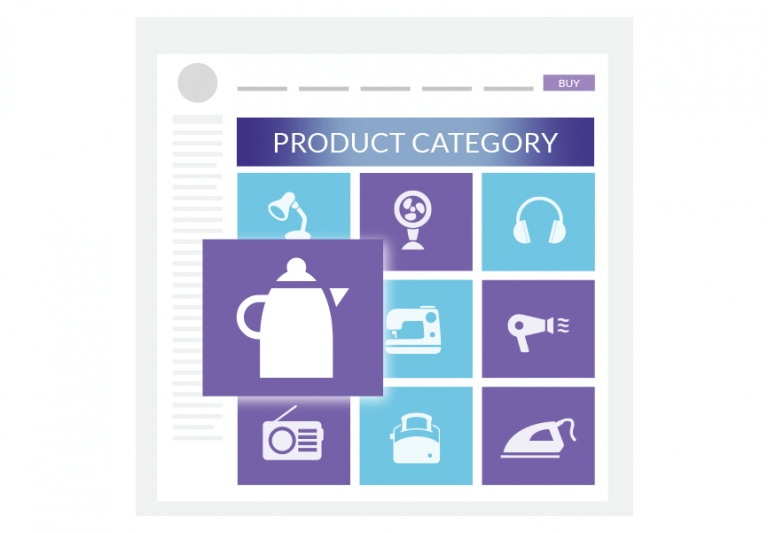
How to Prepare Your WooCommerce Store for International Sales
- 09 March 2023
With the growth of e-commerce and the increasing globalization of business, expanding your online store’s reach to a global audience has become more important than ever. However, entering international markets requires careful planning and preparation. In this article, we will discuss the key steps you need to take to adjust your WooCommerce store for international sales.
Choose the right currency
Offering customers the ability to select their preferred currency is crucial when selling internationally in WooCommerce. It ensures that users can easily understand the prices of your products and makes the purchasing process much smoother. Here are some key steps that you have to take:
- Install a currency switcher plugin — WooCommerce does not have a built-in currency switcher, so you will need to install a plugin such as “WooCommerce Currency Switcher” or “WooCommerce Multi-Currency Plugin” to enable this functionality.
- Configure the currency options — once the plugin is installed, adjust the configuration by selecting the currencies you want to offer and setting the exchange rate for each. The plugin will automatically convert the prices to the customer’s selected currency based on the exchange rate you set.
- Display the currency switcher — make sure that customers can easily access the plugin and switch between currencies. You can add the switcher to your header, footer, or sidebar, depending on your website’s design.
- Test the functionality — before launching your store, test the currency switcher’s functionality by placing test orders and checking that the prices are being displayed and converted correctly.
The appropriate plugin will allow your customers to choose their preferred currency but will not yet allow them to make payments. For this purpose, you should reach for more WooCommerce extensions.
Use a global payment gateway
The installation and configuration of the payment gateway is almost identical to that of the currency switcher. All you have to do is choose the right plugin and adjust it to your customers’ needs.
There are many global payment gateways available, including PayPal, Stripe, and 2Checkout. Choose one that supports the currencies and payment methods you want to offer your customers. After its installation, configure it by entering your account information, such as your email address and API keys. Set up the payment options you want to offer, for example, credit cards, PayPal, or bank transfers.
Do not forget about enabling the SSL certificate for your website to ensure secure transactions and gain customers’ trust. Today, it is an absolute basis for safe online shopping and a guarantee of the seller’s credibility.
Localize your store for different languages and cultures
When selling internationally, you have to consider all the cultural differences concerning the markets you’re interested in. Some names, symbols, or motifs may be positively associated in one country and offensive in another. For this reason, before entering the international market, make sure that your store is properly adapted to the habits of customers in the selected markets. This will include not only changes in the graphics or design of the site but, above all, in the local language area.
Take care of the following aspects of your WooCommerce store:
- Choose supported languages: Determine which languages you want to offer in your store based on the target markets you are trying to reach. It is best to start with the most commonly spoken languages in those regions, as well as English which is used internationally.
- Install a translation plugin: There are several translation plugins available for WooCommerce, such as Weglot or Polylang. Choose one that fits your needs and install it in your store.
- Translate your content: Use the translation plugin to translate all of your store’s content, including product descriptions, categories, and checkout pages. Ensure that the translations are accurate and culturally appropriate.
- Customize your store for different cultures: In addition to translations, consider adjusting your store’s design and layout for different cultures. This may include using images, colours, and fonts that resonate with customers in given regions.
- Offer local payment and shipping options: Use the right plugins to provide users with solutions that are popular in the regions you are targeting. This can help increase customer trust and make it easier for them to make purchases.
Ensure competitive pricing
The competition in the e-commerce market is constantly growing, so when running a store in WooCommerce, you need to reach for solutions that will give you an advantage over other sellers. For example, a price monitoring and repricing tool, such as Dealavo, will prove invaluable.
Set competitive prices with Dealavo!
Dealavo is a pricing intelligence tool that can help you ensure competitive pricing when selling internationally in WooCommerce. It allows you to monitor the market in real-time, analyze the pricing trends and identify opportunities for pricing optimization. What is more, the application is equipped with a dynamic pricing feature that automatically updates your prices based on your pricing strategy and competitive data.
Thanks to Dealavo, you can easily analyze pricing trends in different markets and adjust your prices accordingly to ensure competitiveness and profitability. All you have to do is install the Dealavo WooCommerce plugin and configure your settings, so set up your pricing strategy by defining your competitors, products, and target markets.
You can be sure that the module is fully compatible with the WooCommerce platform. If you find it hard to integrate, though, you can always contact Dealavo consultants, who will guide you through the entire process.
Understand local tax laws
Thanks to modern online tools, adapting the technical aspects of the store to specific markets is extremely simple today. Compliance with the legal regulations in given countries may prove to be a much greater challenge. Here are some key considerations:
- VAT/GST: Value-added tax (VAT) or goods and services tax (GST) may be applicable in some countries where you sell your products. You may be required to register for VAT/GST and collect taxes on your sales.
- Nexus rules: They refer to the criteria that determine whether a business has a substantial enough presence in a particular state or jurisdiction to be subject to that state’s tax and regulatory laws. Be sure to check the local nexus rules in each country where you sell your products.
- Cross-border sales taxes: Some countries may charge taxes on cross-border sales. For example, the European Union charges a VAT on goods imported from non-EU countries. You may need to register for VAT in the country of destination and collect and remit the tax.
- Tariffs and duties: They may apply to products imported into some countries. You may need to pay customs duties and taxes on the products you sell, and these costs may affect your pricing strategy.
- Compliance requirements: Depending on the local tax laws, you may need to file tax returns, maintain records, and comply with other tax-related obligations.
By understanding the local tax laws in each country where you sell your products, you can ensure compliance and avoid potential legal issues. It is recommended to seek professional advice to ensure that you are meeting all the tax obligations in each country.
Ship products to international buyers
One of the most demanding issues when preparing a WooCommerce store for international sales is shipping products. Your parcels will often travel a long way, crossing many borders. This can, of course, negatively affect both the delivery time and its price. How to deal with this challenge?
First, you should choose your carriers. Some common solutions include FedEx, DHL, UPS, and USPS. Check with each company to understand their rates, delivery times, and other relevant information. Next, set up shipping zones to specify which countries you are willing to ship to. Notice that it is possible to set up different prices for each zone. You can set flat rates, charge by weight or the cart total, or use real-time shipping rates from carriers.
Pay attention to the customs forms and insurance too. The first provides information about the contents of the package, the value of the items, and other relevant details. Your shipping carrier should be able to provide guidance on how to complete these forms. The second can protect you and the customer in the event that the package is lost or damaged during shipping.
Remember that you can always use some shipping plugins for WooCommerce. They can help you streamline the delivery process, automate calculations, and provide additional options for shipping methods and carriers.
Respond to customer inquiries in their language
Taking care of a positive customer experience is the basis for success in the modern e-commerce market. In international sales, this is naturally associated with the abolition of all communication barriers. If you care about a professional image, you need to be well prepared to answer the customers’ questions in their languages. Here are some tips to help you:
- Use translation tools: There are many free and paid applications available that can help you translate customer inquiries and respond in their language. Some popular options include Google Translate and DeepL.
- Hire a translator: If you are receiving a high volume of inquiries in a particular language, you may want to consider hiring a professional translator to help you respond to customers.
- Use a multilingual plugin: You may be interested in using a multilingual plugin for WooCommerce, such as WPML or Polylang. These tools allow you to translate your website content, including customer inquiries, and provide a seamless multilingual experience for your target group.
- Use canned responses: If you are receiving similar inquiries from multiple customers, you can create canned responses in different languages that you can use to respond quickly and efficiently.
- Be transparent: If you are not able to respond in a customer’s language, be transparent about it and offer alternatives. You can explain that you do not speak their language, apologize for any inconvenience, and offer to use a translation tool to assist them.
By using these strategies, you can effectively communicate with your customers in their language and provide a positive customer experience in your WooCommerce store.
Wrapping up
If you follow the steps above and stock up on the necessary plugins, you can easily prepare your WooCommerce store for international sales. Pay particular attention to the selection of tools that are fully compatible with the platform and adapt to the needs and habits of recipients in selected markets.





